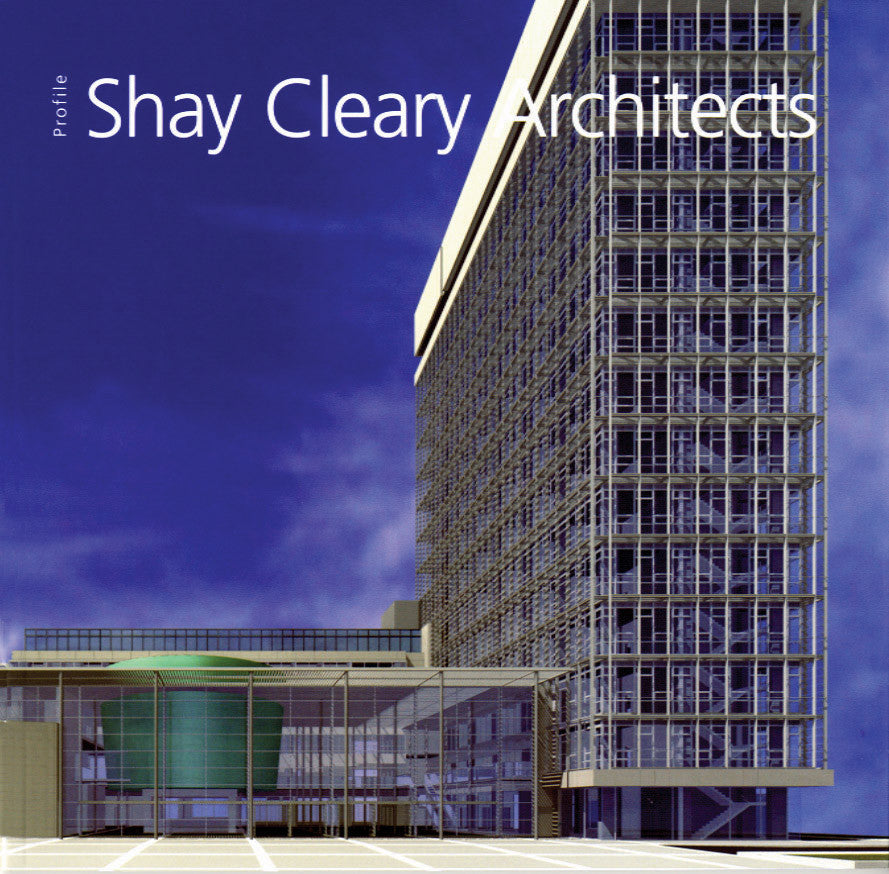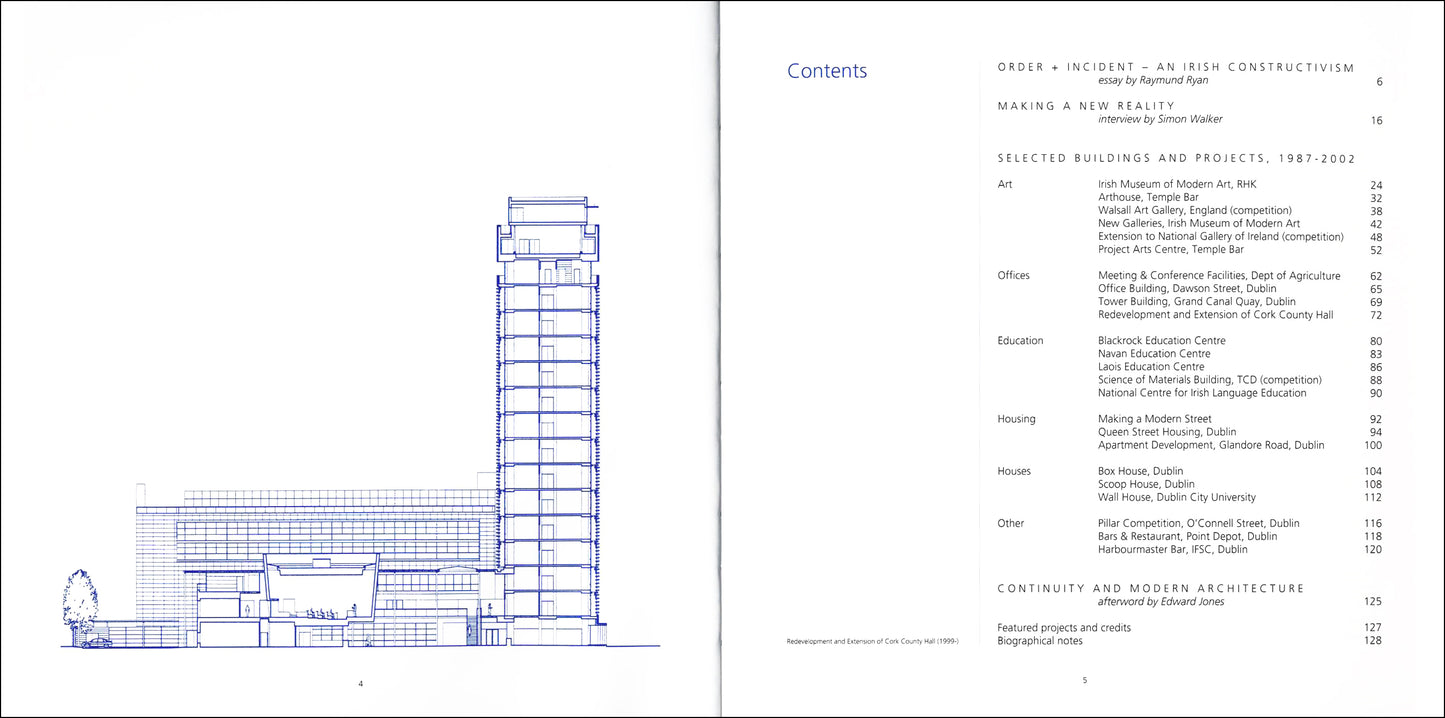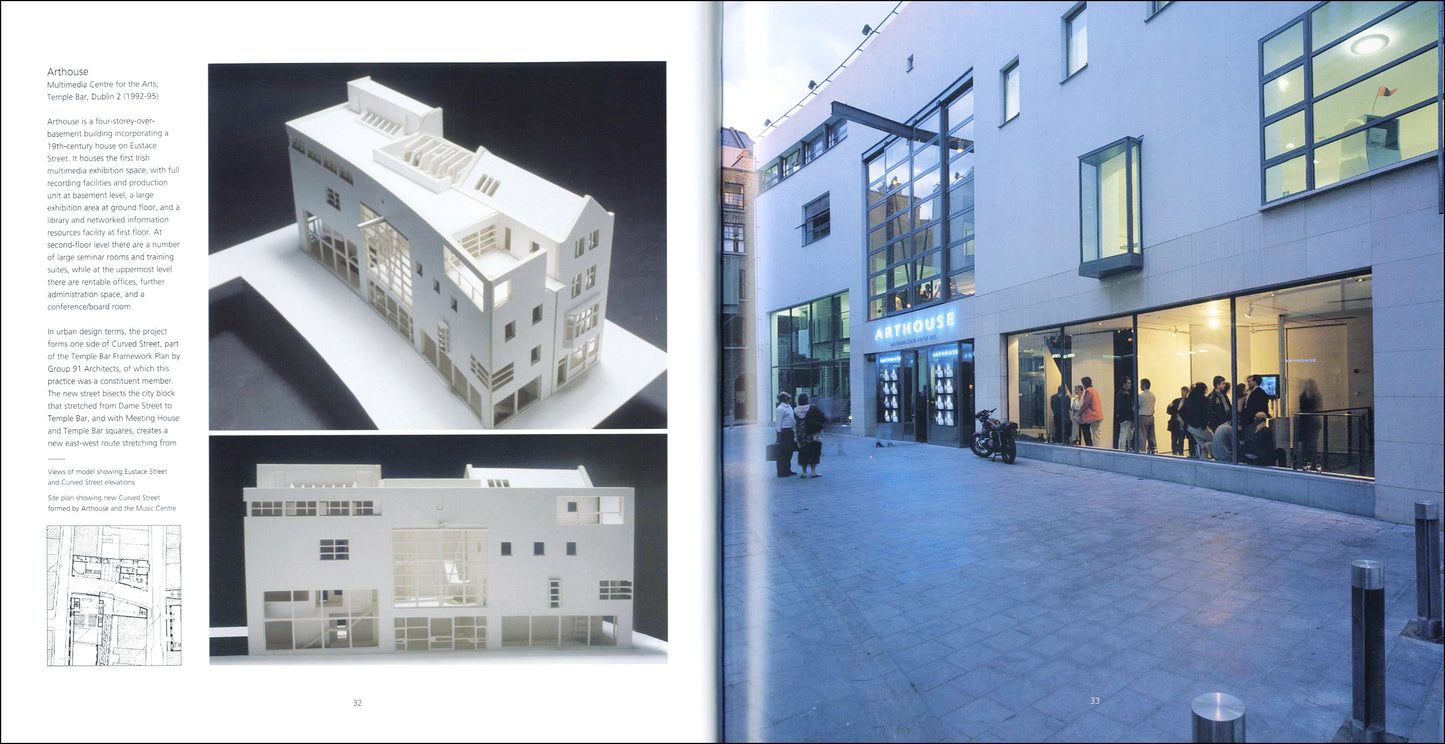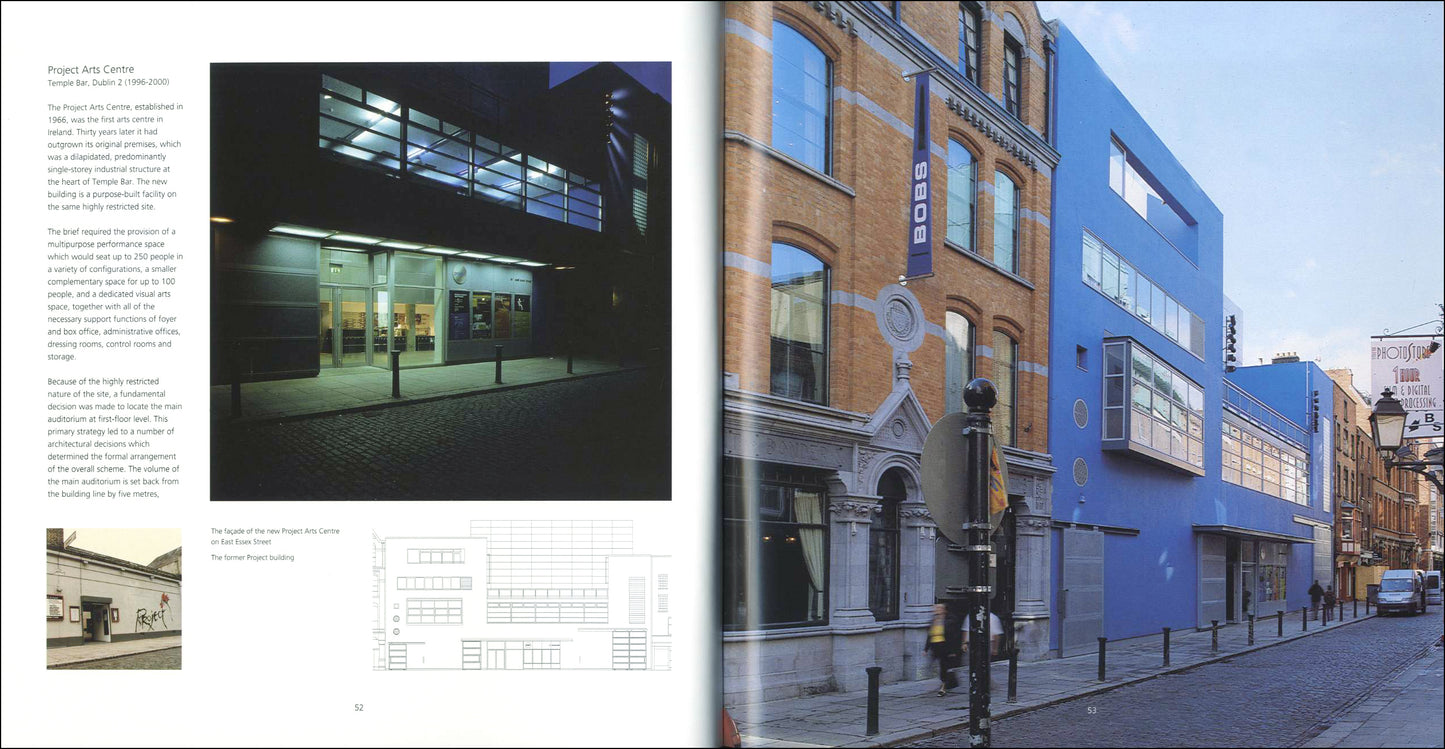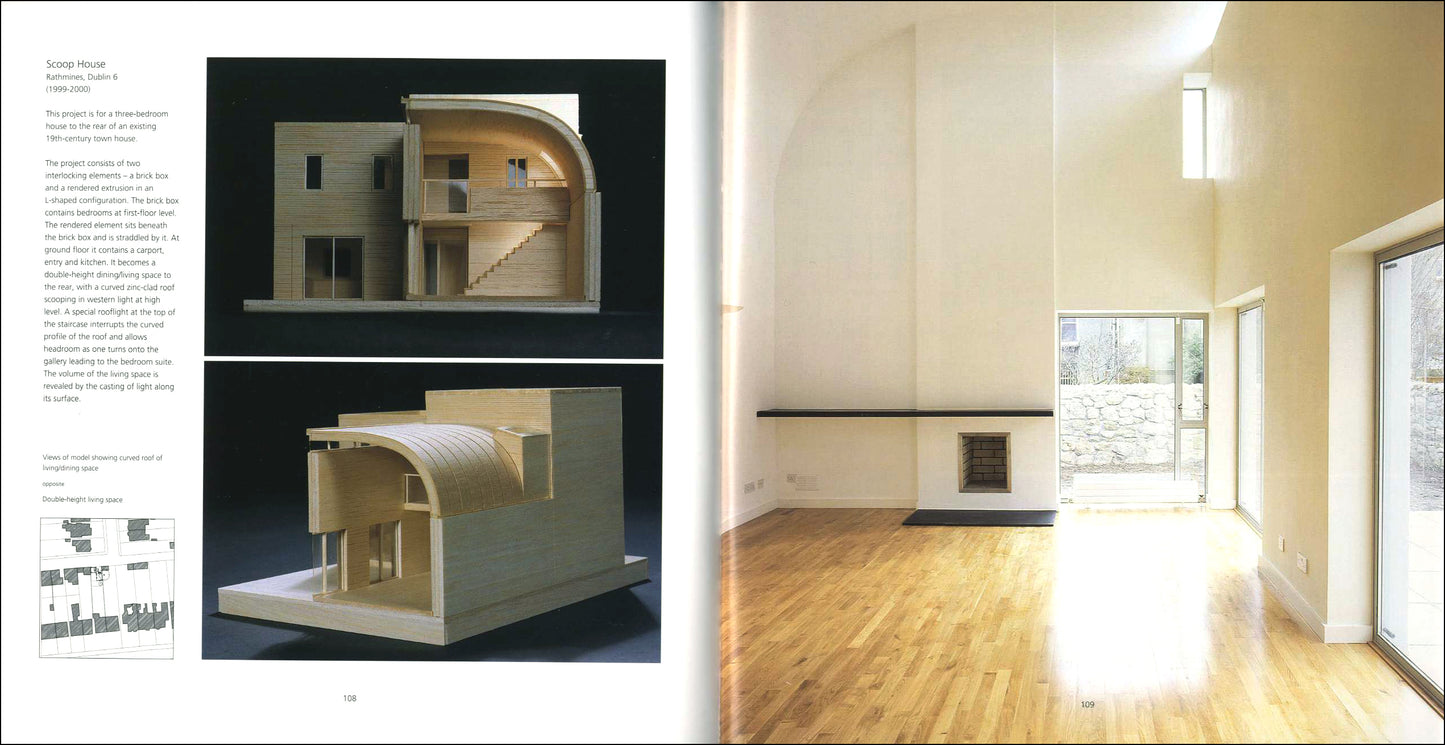Gandon Editions
Architecture Profile °4 – SHAY CLEARY ARCHITECTS
Architecture Profile °4 – SHAY CLEARY ARCHITECTS
Couldn't load pickup availability
Share
essay by Raymund Ryan; interview by Simon Walker; afterword by Edward Jones
ISBN 978 0946846 894 132pp (pb) 22.5 x 22.5 cm full-colour 320 illus
"Shay Cleary is unmistakably a Modernist, an architect in that progressive, sometimes stark lineage integrally associated with 20th-century culture but instigated very much earlier. With his exploration of volume and structure and colour, Cleary has been inspired by the urbane and painterly work of Le Corbusier (1887-1965). Indebted to the Swiss-French master, the Irish architect’s work has nevertheless developed its own local resonance. Its methodology of form, structure and skin has some Classical essence akin – albeit in the materials of today – to the thin architecture and luminous interiors of the Enlightenment. Georgian Dublin did not develop organically: Irish neo-Classicism was itself an adaptation of European modes and theories of design. Until recently, this historic fabric suffered from extraordinary neglect and dereliction. With suburbia expanding outwards in unplanned spasms, medieval, Georgian and Victorian Dublin has been the site of much insensitive building and of traffic engineering imposed in the name of progress.
A typical response is to resort to imagery, to create a sort of Potemkin Village of illiterate reproduction. Cleary’s Dublin work results instead from a vivid Modernism, an approach to design which may paradoxically be closer in spirit to Dublin’s historic cityscape than today’s generic kitsch. Cleary introduces new veils and membranes in between the old, skins of a lightness and sensuousity unimaginable to Georgian builders dependent upon load-bearing masonry. Cleary shares the ‘conviction’ noticed by Alan Colquhoun – in the work of the New York Five – ‘that the “new tradition” of avant-garde art constituted a historical development from which it was impossible to turn back’. He is enamoured with Modernism but tackles many of the shortcomings of 1960s international corporatist design. He is both inquisitive about his architecture’s own stylistic roots and alert to complex issues of urbanism and meaning, issues mostly ignored during the period of his own professional training. In Ireland today, Cleary develops the cosmopolitan language of radically inventive modernist architects to address evolving realities of construction, urban development and institutional representation."
— from the essay by Ray Ryan
"One goal is to try to achieve a kind of inevitability about the work – that it will sit there for a long time and not become irrelevant. It’s a very intangible thing to describe. Whenever I think I’m being really wild, somebody comes along and goes ‘Oh, that’s very restrained...’ Well, you bring your baggage to the thing in one way, but underlying the work there has to be the idea that it’s of sufficient quality to last. I’m interested in an elemental approach to things, where a programme suggests that there are points of intensity, and that those points might find an architectural description. How you marry the particular form you choose to the particular programme can seem arbitrary at times, and it’s hard to rationalise. But still the aim in a lot of projects, in the analysis of the programme, is to get a kind of hierarchy established where one thing is the most important space and it might have this kind of expression, and another is secondary and it might act as a backdrop...
What’s important to me is that I’m really trying to make work which is authentic. I want to make work essentially for my own place, drawing on and developing the traditions of modern architecture and a modern way of making space. It’s very hard to know how the public perceives your work because you, as the author, are always conscious of the concept behind it, and therefore it is hard to regard it as ‘found’. That’s why it’s the greatest compliment when somebody takes a building for granted – you know, the kind of secret work of architecture where nobody has any idea about the effort you’ve gone to to make it because it just seems so completely natural and inevitable. I think the most moving things are essentially simple and sure. If there’s nothing left to strip away and it’s still really powerful, then you’re looking at a successful piece of work."
— Shay Cleary in conversation with Simon Walker
|
CONTENTS Order + Incident – An Irish Constructivism essay by Raymund Ryan 6 Making a New Reality interview by Simon Walker 16 SELECTED BUILDINGS AND PROJECTS, 1987-2002 Continuity and Modern Architecture afterword by Edward Jones 125 Featured projects and credits 127 Architect’s Biography 128 FEATURED BUILDINGS
|
